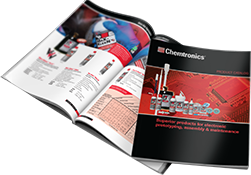
Is Air Duster (canned air) Safe on My Computer and Other Electronics?
Yes, air duster is generally designed for use on electronics. There are a few things to watch out for: Avoid spraying the refrigerant liquid, which can happen if you shake the can, or angle it too much. The refrigerant is very cold, so can...
Read This Post
How long does a can of air duster (canned air) last?
That depends on the size of the can and how much you use it. If the can and valving is intact and undamaged, it will not leak or spoil, so can sit on a shelf for many years.
Read This Post
How do you use air duster (canned air)?
The can of duster must be held in an upright position when spraying. Do not tilt can more than 40 degrees during spraying operation or shake during use. Before use, press actuator to clear valve of any liquid product. Extension tube can be used...
Read This Post
What happens if you shake a can of duster (canned air)?
Most duster contain refrigerant that is liquid when held under pressure. The goal of duster is to spray the vapor not the liquid, so the valving is designed to capture the vapor from the top of the can. When you shake a can, turn it, or flip...
Read This Post
What is in air duster (canned air)?
Most aerosol duster contains a refrigerant/propellant that cannot be considered “air”. As a matter of fact, breathing too much of these vapors can lead to negative health effects. Compressed Air Duster is most commonly filled with...
Read This Post
Is air duster (canned air) dangerous?
It can be if used improperly. Aerosol dusters contain pressurized refrigerant, not breathable air as the common names (e.g. “canned air”, “compressed air”) for it suggests. Take care to use in a ventilated area, avoid...
Read This Post
Is WD-40 a degreaser?
WD-40 is a lubricant (fish oil to be exact) dissolved in a solvent. While it can break down grease and oil to a certain degree, it also adds back some. This might be desirable if you are cleaning a hinge, conveyor, or corrosive-prone part, but...
Read This Post
What is the best degreaser?
That depends on the requirements of your application. There are a number of factors that can have a big impact on performance and safety: flammability, dielectric strength, compatibility, toxicity, and environmental impact. Degreasers often...
Read This Post
Should I use gloves when using a degreaser?
Yes, it is a good idea to use gloves when degreasing. The solvents used in degreasers do a great job at breaking down greases and oils, which also happen to exist in health skin. If your hands are exposed to a degreasing solvent for enough time,...
Read This Post
Are degreasers toxic?
There are no degreasers that should be taken internally, but some ingredients are more harmful than others. N-Propyl Bromide (nPB), Trichloroethylene (TCE) and Perchloroethylene (Perc) are highly toxic chemicals commonly used in degreasers to...
Read This Post


